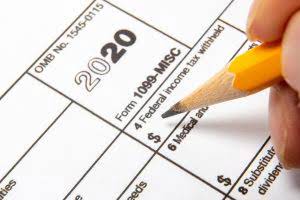
A general ledger is a formal representation of a company’s financial statements where the debit account and credit account records are validated with a trial balance. A general recording transactions ledger offers comprehensive documentation of all financial transactions of the company over a certain period. A general ledger is the repository of all account-related information required to prepare a financial statement. The typical accounts include accounts of assets, liabilities, shareholders’ equity, revenues, and expenses, etc. Your profit & loss organises your revenue and expense accounts whilst your balance sheet organises your asset, liability and equity accounts. A single transaction will have impacts across all reports due to the way debits and credits work.

Automate T Accounts with Online Software

For the past 52 years, Harold Averkamp (CPA, MBA) hasworked as an accounting supervisor, manager, consultant, university instructor, and innovator in teaching accounting online. When inventory items are acquired or produced at varying costs, the company will need to make an assumption on how to flow the changing costs. For the past 52 years, Harold Averkamp (CPA, MBA) has worked as an accounting supervisor, manager, consultant, university instructor, and innovator in teaching accounting online. Ask a question about your financial situation providing as much detail as t accounts possible. Our mission is to empower readers with the most factual and reliable financial information possible to help them make informed decisions for their individual needs. Our goal is to deliver the most understandable and comprehensive explanations of financial topics using simple writing complemented by helpful graphics and animation videos.

When teaching accounting or bookkeeping
For instance, a company hires some extra temporary labor for a busy period in their factory. The accounting department later catalogs those labor payments under “operating expenses” instead of under “inventory costs” (which is where factory labor costs should go). If the labor costs are still debited and credited fully, then this type https://www.bookstime.com/ of mistake can also be difficult to catch. A double entry system is considered complex and is employed by accountants or CPAs (Certified Public Accountants).

A Guide to T-Accounting (With Examples)
- In double-entry bookkeeping, a widespread accounting method, all financial transactions are considered to affect at least two of a company’s accounts.
- Every financial transaction is first recorded as a journal entry, into the general journal.
- On the top, the name of the ledger is mentioned, the left side is for debit entries, and the right side is for credit entries within the ledger.
- In January, I pay £6000 in cash to the landlord, so my bank (asset) account is credited £6000.
- These documents will allow for financial comparisons to previous years, help a company to better manage its expenses, and allow it to strategize for the future.
- It’s impossible to provide a complete collection of examples that addresses every financial transaction with the corresponding T account.
For the revenue accounts, debit entries decrease the account, while a credit record increases the account. On the other hand, a debit increases an expense account, and a credit decreases it. A T-account is an informal term for a set of financial records that uses double-entry bookkeeping. A balance sheet is a summary of a company’s financial position at a given point in time.
- T-accounts are used as an aid for managing debits and credits when using double-entry accounting.
- With Deskera you can effortlessly manage and oversee your invoices, credit notes, business expenses, financial reports all in one place.
- In turn, by paying the rent, we also decreased the amount of cash available in the bank.
- T-accounts serve as the foundation for preparing financial statements, providing summarized information about a company’s assets, liabilities, equity, revenue, and expenses.
How Is ‘She’s So Crazzzzzzzy’ Used In Memes?

It is typically represented as two columns with the accounts that have been affected listed on either side, usually labeled Debit (left) and Credit (right). It can be used to balance books by adding all transactions in a set of accounts so the total debits equal the total credits for each account. Every financial transaction is first recorded as a journal entry, into the general journal.
